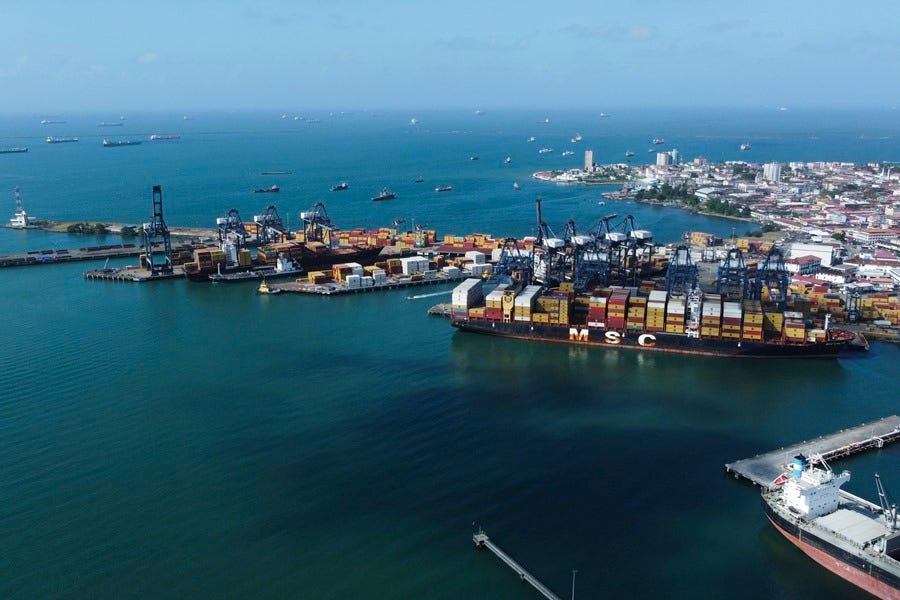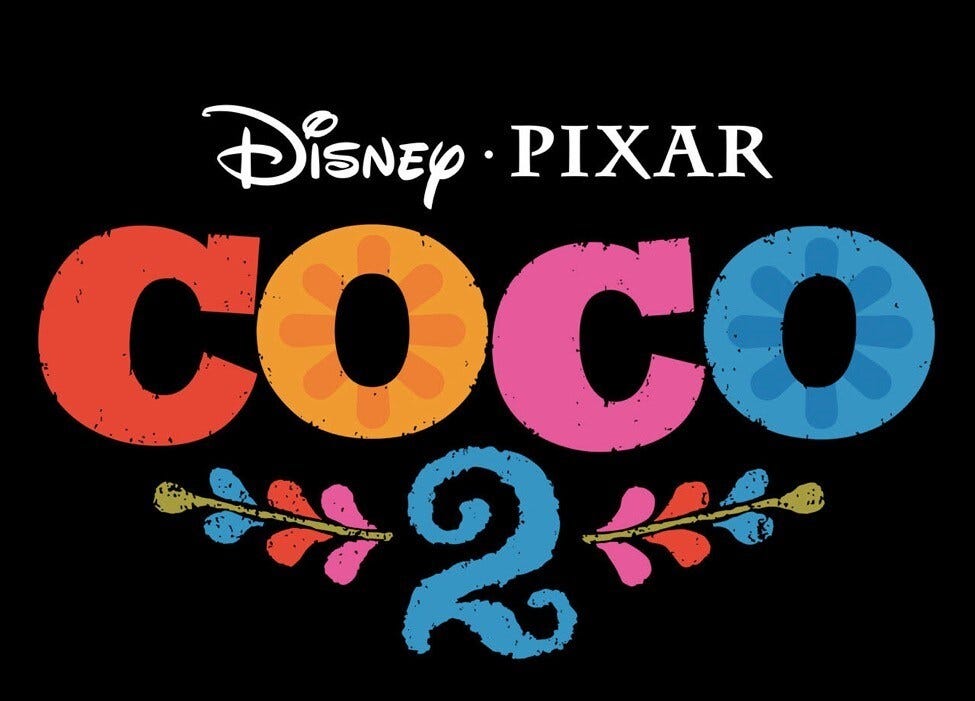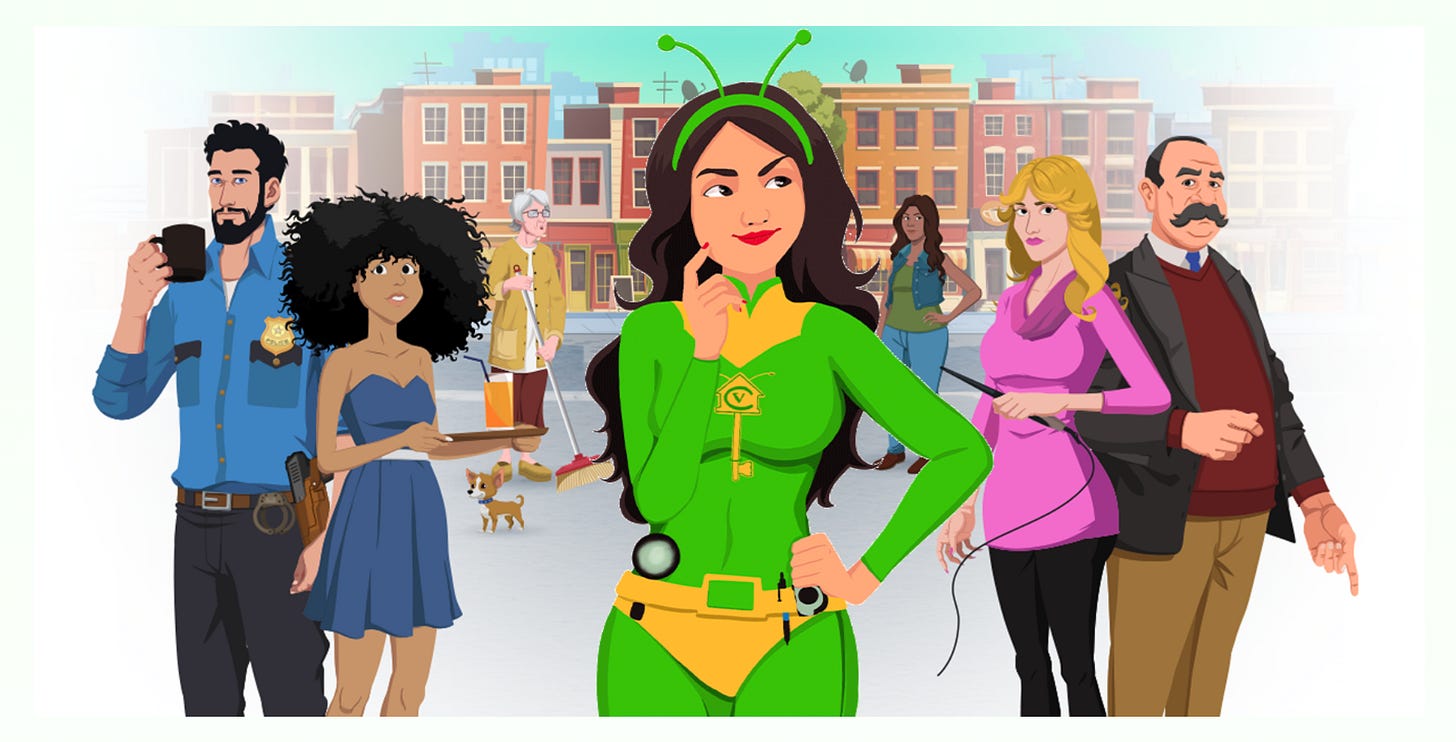Saving for College? Try a 529 Plan, The U.S. Just Made a Power Move at the Panama Canal, Latino Homeowners Hit a Snag, But Keep Rising, Sofía Vergara’s Coffee Is Spilling with Girl Power.
News from the Hispanic World in One Click
Welcome! La Chapulina Verde is bilingual. Every article is available in English and Spanish. Enjoy reading in your preferred language. Keep up to date and follow us on our social networks! Instagram, Threads, Facebook, and YouTube.
Saving for College: What are 529 College Savings Plans?
A 529 plan is a special savings account to help pay for school. It is mostly used for college, but it can also be used for education costs from kindergarten through college, depending on the state you live in. The money in a 529 plan can grow without being taxed, and if you use it for education, you don’t have to pay taxes when you take it out.
Almost every state offers a 529 plan. You don’t have to live in a certain state to use its plan, but some states give tax benefits for using their own. You can open a 529 account for a child, a friend, or even yourself. The person who opens the account stays in control of the money, even though it is for someone else’s education.
There are two types of investment options in 529 plans. One is age-based, which gets safer as the student gets closer to college. The other is static, where the risk level stays the same until you change it. You can make changes to your investment twice a year.
You can open a 529 account with a small amount, like $25 a month. You can also set it up so the money is taken from your paycheck or bank account automatically. This makes saving easier.
The money you put in a 529 plan is after-tax, so it’s not deducted from your federal taxes, but many states offer tax benefits. You can put in up to $18,000 a year ($36,000 for couples) without triggering a gift tax. You can also contribute a larger amount if you spread it over five years for tax purposes.
529 plans can affect financial aid, but not too much. Only a small part (up to 5.64%) of the money is counted in federal aid decisions because it belongs to the parent, not the student.
If your child gets a scholarship, you can take out the same amount from the 529 plan without a penalty, but you will pay taxes on any earnings. If you take out more than the scholarship amount, you will have to pay a 10% penalty on the extra.
If your child doesn’t go to college, you can use the money for other schools, trade programs, or even to pay off student loans (up to $10,000). You can also transfer the money to another family member or even to yourself. If you still have money left over, new rules allow you to move up to $35,000 from a 529 account into a Roth IRA, but only if certain conditions are met.
529 prepaid tuition plans let you pay today’s prices for future college costs, but they are usually only for public schools in your state. Some plans can be used at private schools too, but they often cover only part of the cost.
Before choosing a 529 plan, talk to a financial planner or tax advisor to make sure it’s the right option for your family’s needs.
U.S. Gains Control of Panama Canal Ports Through BlackRock
BlackRock, a large American investment company, has made a deal to take control of ports on both sides of the Panama Canal. The ports were previously controlled by a Hong Kong-based company called CK Hutchison Holdings. BlackRock and a group of partners are buying all the shares of Hutchison Port Holdings and Hutchison Port Group Holdings for nearly $23 billion, including $5 billion in debt.
This deal will give BlackRock and its partners control over 43 ports in 23 countries. Two of those ports, Balboa and Cristobal, are located on each end of the Panama Canal, which is a major route for global shipping. Other ports involved in the deal are located in Mexico, Australia, the Netherlands, Egypt, and Pakistan.
The Panama Canal is important because about 70% of the sea traffic that passes through it comes from or goes to the United States. The U.S. built the canal in the early 1900s but handed control over to Panama in 1999. Former President Donald Trump has said that this decision was a mistake and has accused China of having too much influence over the canal, though Panama’s government has denied that.
Some American leaders, like Senator Ted Cruz, have also raised concerns that China could use the ports near the canal to spy or interfere with shipping. In February, U.S. Secretary of State Marco Rubio visited Panama and warned the country to reduce Chinese influence or face possible consequences from the U.S. Shortly after his visit, Panama left China’s Belt and Road Initiative, which is China’s global project to build roads, ports, and railways in other countries. China was not happy about Panama’s decision.
Even though the U.S. government has been watching Hutchison Ports closely, CK Hutchison Holdings said the sale to BlackRock was not political. The company said it was a commercial decision and that many companies had shown interest in buying the ports. They said the process was competitive and happened quickly.
The ports near the Panama Canal had recently been given a 25-year extension to keep operating, but there was already an investigation into how that deal was made. Some people believed the U.S. was planning to help one of its own companies take over the ports, and this new deal seems to support that idea.
The group buying the ports includes BlackRock, its subsidiary Global Infrastructure Partners, and Terminal Investment Limited. BlackRock is based in New York and manages about $11.6 trillion in assets, making it one of the largest investment firms in the world.
Hispanic Homeownership Drops Slightly, But Overall Growth Continues.
In 2024, the Hispanic homeownership rate in the United States dropped to 49%. This was the first time it went down in ten years, according to a report from the National Association of Hispanic Real Estate Professionals, or NAHREP. This group helps support Hispanic families who want to buy homes.
The drop was about half a percentage point, and NAHREP says it was not a surprise. Many families are having a hard time affording homes right now. Home prices have gone up, and interest rates have been high too. In 2024, the average 30-year mortgage rate was between 6.08% - 7.22%, which makes borrowing money for a house more expensive.
Even though the rate of Hispanic homeownership went down, the total number of Hispanic households that own homes actually hit a new record. In 2024, about 9.8 million Hispanic families owned homes, more than ever before.
The report says that one reason for the drop in the homeownership rate is that the number of new Hispanic households is growing quickly. In 2024, 676,000 new Hispanic households were created, which was more than any other racial or ethnic group in the country. But because the number of new families grew faster than the number of people buying homes, the homeownership rate still fell slightly.
Some experts in the housing industry talked about why people are hesitant to buy homes. One mortgage lender, named Jorge Montoya, said that people get excited to buy a home, but then they see scary headlines in the news and become nervous. He said that it now takes more time and conversations to help people feel ready to buy a house.
NAHREP is still hopeful about the future. They say that the Hispanic population in the United States is much younger than other groups, with a median age of 31. Because of this, they believe that young Hispanic families will keep buying homes in the years to come. The report says that Latinos are expected to drive housing demand for decades.
Disney’s Coco 2 Is On Its Way
Disney and Pixar have officially announced that a sequel to the popular 2017 movie Coco is being made. The news was shared by Disney CEO Bob Iger on March 20 during a meeting with shareholders. The new movie, called Coco 2, is set to come out in theaters in 2029.
Right now, Coco 2 is still in the early stages of development, so not many details are known yet. However, Bob Iger said the movie will have lots of humor, emotion, and adventure. Fans are excited to see what the sequel will bring.
The first Coco movie told the story of a 12-year-old boy named Miguel. He dreams of becoming a musician, even though his family is against music. During the Day of the Dead holiday, Miguel travels to the Land of the Dead to find out more about his family’s past. The film was praised for being beautiful, emotional, and full of amazing visuals. Many people called it the best animated film of the year when it came out.
Coco won two Oscars. One was for Best Animated Feature, and the other was for Best Original Song for “Remember Me.” The director of the first film, Lee Unkrich, won the Oscar, and producer Darla K. Anderson was also a winner. Adrian Molina, who helped direct the movie, did not get an Oscar because the rules only allow two people to be nominated in that category.
For Coco 2, both Lee Unkrich and Adrian Molina are coming back to work on the movie. This has fans hopeful that the sequel will be just as good, or maybe even better, than the first one.
It’s not yet known which voice actors will return for the sequel. The original cast included Anthony Gonzalez as Miguel, along with Gael García Bernal, Benjamin Bratt, Alanna Ubach, Renée Victor, Ana Ofelia Murguía, and Edward James Olmos. Sadly, Ana Ofelia Murguía, who voiced the beloved character Mama Coco, passed away last year at age 90. It’s unclear how the film will handle her character’s absence.
Fans are also wondering if Coco 2 will have a new song as powerful as “Remember Me.” That song made many people cry, and some are already joking that they’ll need tissues ready when they see the new movie.
Even though there are still a lot of unknowns, people are very excited about Coco 2. The first movie touched the hearts of many viewers, especially in the Latino community. It celebrated family, music, and traditions like Día de los Muertos in a beautiful and respectful way.
Coco 2 has big shoes to fill, but with the original team coming back, there is a lot of hope that it will be another unforgettable movie.
Fans will have to wait until 2029, but it sounds like the journey will be worth it.
¡Dios Mío! Coffee: Sofía Vergara’s Tribute to Latina Coffee Growers
Sofía Vergara, the famous Colombian actress, has started her own coffee brand. The new company is called ¡Dios Mío! Coffee, which means “Oh My God!” in Spanish. Sofía says the coffee is a special gift from Latina women to the world.
In her announcement video, Sofía joked about how some coffee tastes bad and said that her new coffee would fix that. She shared that she worked with passionate women from Colombia who grow coffee with love and care. These women helped her create the kind of coffee she has always dreamed of.
The coffee is made by women who are part of The National Federation of Coffee Growers in Colombia. This group helps protect the rights and success of Colombian coffee farmers. Sofía says her brand is not only about great coffee beans, but also about supporting the women who grow them. She explained that these women have worked on coffee farms for many generations and are proud of what they do.
¡Dios Mío! Coffee is made from Arabica beans, which are known for their smooth and rich flavor. These beans are different from Robusta beans, which are usually stronger and more bitter. The coffee comes in different forms, including ground coffee, whole beans, K-cups, and coffee pods.
There are also three roast levels to choose from. The light roast is described as a warm “hug from grandma.” The medium roast has a mix of nut, white chocolate, and brown sugar flavors. The dark roast has a strong coffee taste with a hint of cocoa.
People can buy ¡Dios Mío! Coffee online through the company’s official website or at Walmart stores.
Sofía Vergara’s new coffee brand is not just about drinking delicious coffee. It’s also about supporting hardworking Colombian women and sharing a part of her culture with the world. The coffee is made with love, tradition, and pride, and it celebrates where Sofía comes from and the women who helped make her dream come true.











